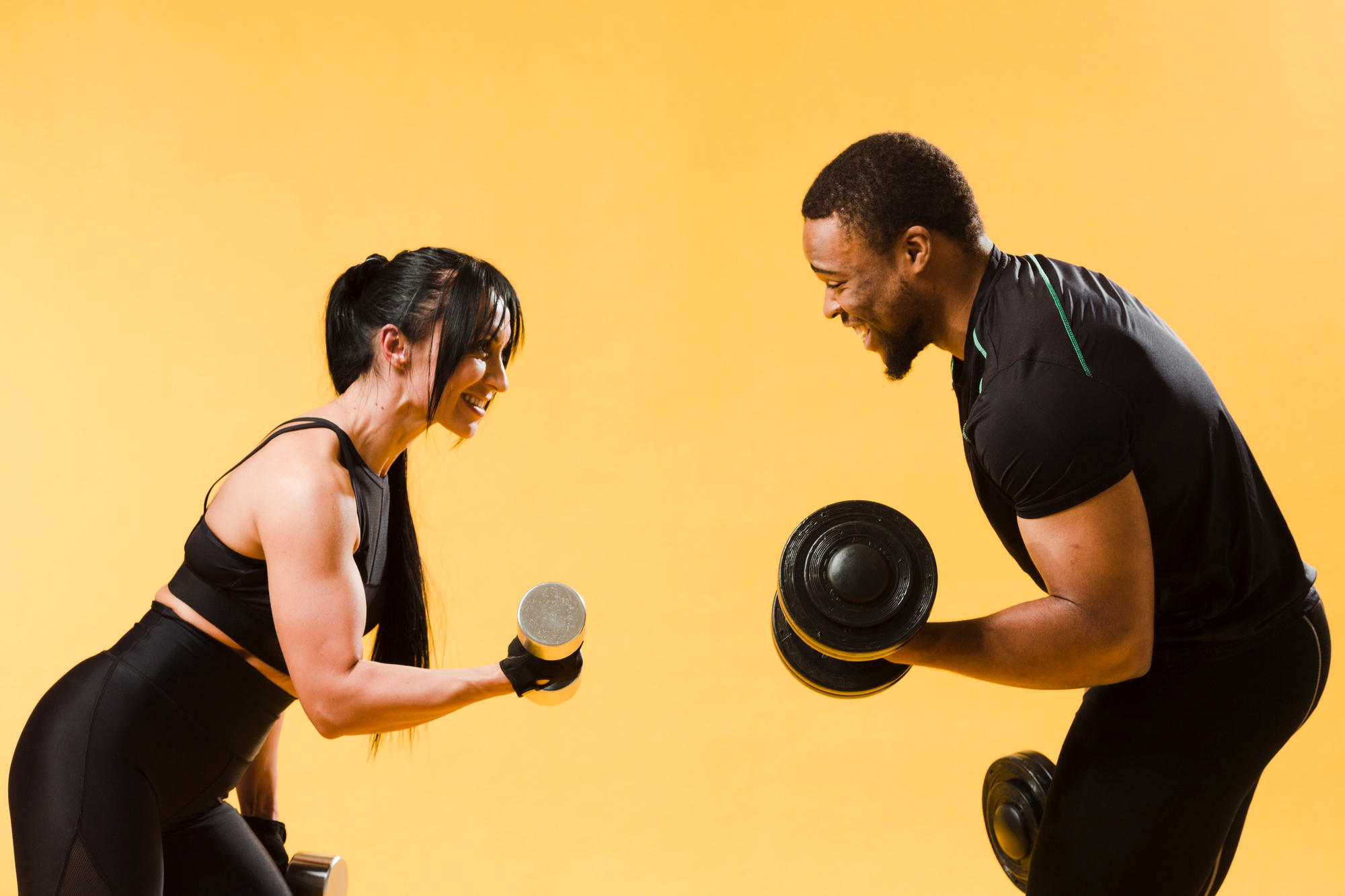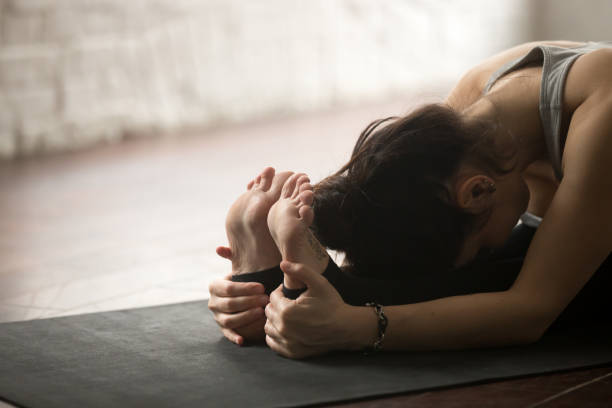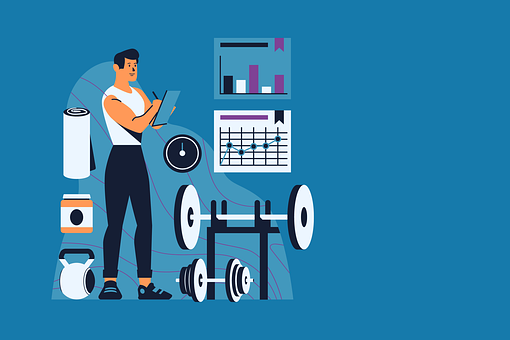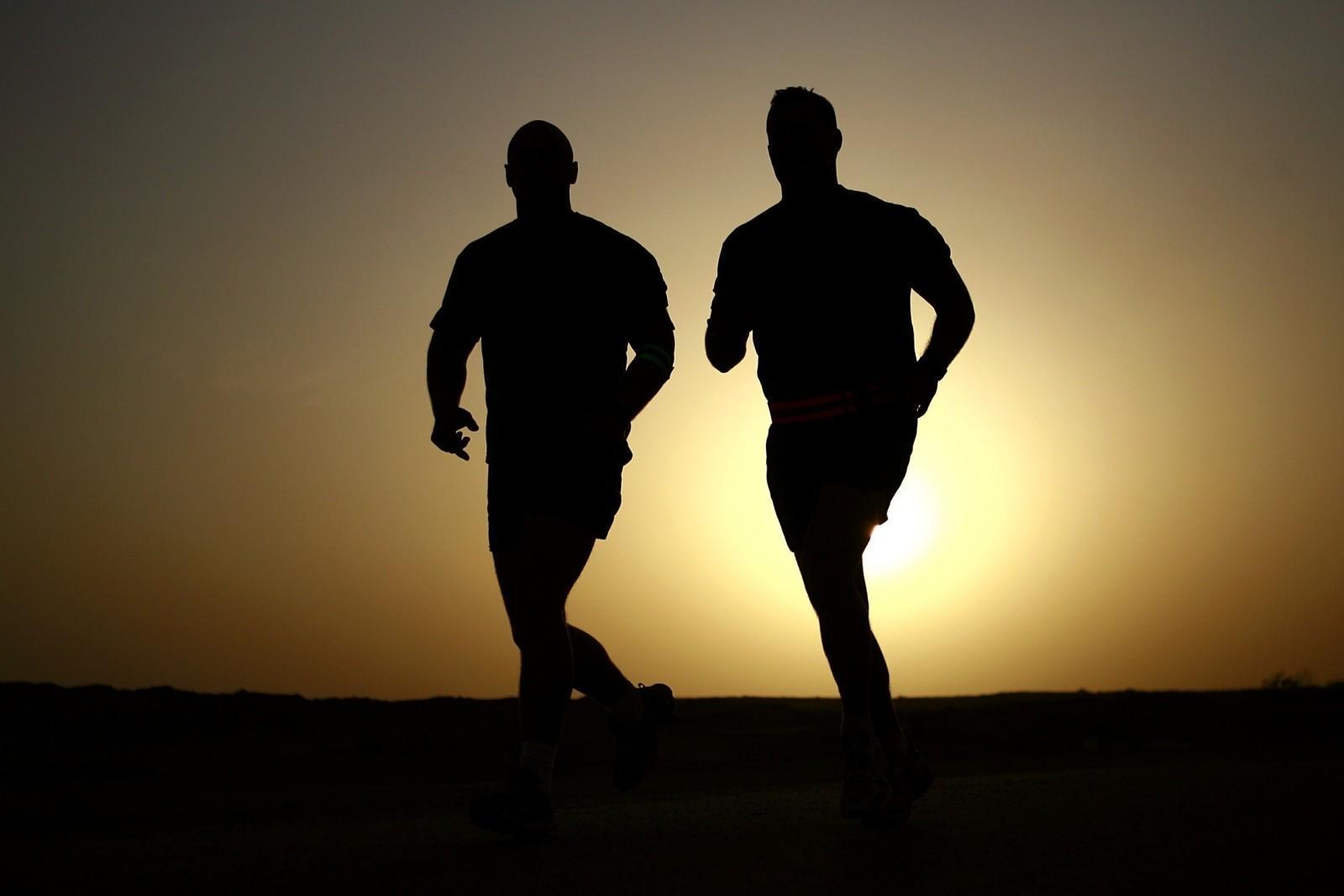The stereotypes of female bodybuilders are being challenged by amazing athletes such as Iris Kyle, Robin Coleman, and Heini Koivumieni (all who have won body building competitions like the Arnold Classic).
As a woman, the traditional idea of beauty is surrounded by cultural stereotypes such as the bikini competition model body or the fitness model. Female fitness is admired, but if you go too far, people may begin to question your femininity and compare you to masculine stereotypes. But these are the things that must be challenged and thanks to professional bodybuilders like Iris, Robin and Heini, things are now easier for the new generation to enter the sport.
Women are able to power lift, pump iron, and excel at weight lifting, strength training and high-intensity workouts. Yoga, Pilates and aerobic exercises are no more feminine than pumping iron and lifting weights are masculine. This false idea is thankfully challenged, and more and more women are following their own idea of beauty.
Whether you are pregnant, unmotivated, fat or skinny, the sport of bodybuilding has the added advantage that it can be done by everyone and be adapted to get the best results. Let's discover some tips of what makes bodybuilding successful and how you can start.


How Female Bodybuilders Structure Their Workouts
Bodybuilding training programs are everywhere, and you do not need to look specifically for female programs. As a beginner, you should get a program that can help you learn what you need to know to get the best results possible for your input and hard work. Certainly, hiring a personal fitness trainer can do wonders for your bodybuilding regimen.
How to choose? Well, all bodybuilding programs are a personal choice, while some people are confident enough to get started with just a workout DVD and go it alone. Others may need to be guided with a personal trainer at the weight lifting machines. There definitely is a lot of support, and you must choose what is best for you. If you can attend free trials before you commit and see what works best for you.
These programs will provide you with knowledge, motivation, and support to help you to achieve the goals that you want for your body. The very positive part of being a bodybuilder is that there is a lot of help and people are open and willing to guide you if you feel lost.
Female bodybuilders structure their workouts in a similar way to male bodybuilders. The main goal is to build muscle mass, increase strength, and improve overall physique. The specific workout structure may vary based on individual goals, training experience, and personal preferences, but here is a general outline of how female bodybuilders structure their workouts:
- Warm-up: Before starting any workout, it's essential to warm up the muscles and prepare the body for intense exercise. This usually involves light cardiovascular activity, such as jogging or cycling, followed by dynamic stretches or mobility exercises to loosen up the joints.
- Resistance Training: Female bodybuilders typically focus on resistance training to build muscle. This involves using weights, machines, or bodyweight exercises to target specific muscle groups. A typical approach is to divide workouts into different muscle groups or body parts for each session. For example, a common split might include separate days for training chest and triceps, back and biceps, shoulders, legs, and core.
- Compound Exercises: Bodybuilders often incorporate compound exercises into their routines. These are multi-joint movements that engage multiple muscle groups simultaneously, allowing for efficient muscle development and strength gains. Examples of compound exercises include squats, deadlifts, bench presses, overhead presses, and rows.
- Isolation Exercises: In addition to compound exercises, bodybuilders include isolation exercises to target specific muscles and enhance muscle definition. These exercises typically involve single-joint movements and focus on a particular muscle group. Examples include bicep curls, tricep extensions, leg curls, calf raises, and lateral raises.
- Sets and Repetitions: Female bodybuilders typically perform multiple sets of each exercise, with a target number of repetitions. The specific set and rep ranges can vary depending on the training phase, but a common approach is to perform 3-4 sets of 8-12 repetitions per exercise. This range promotes both muscle hypertrophy (growth) and strength development.
- Progressive Overload: To continue making progress, bodybuilders employ the principle of progressive overload. This means gradually increasing the demands on the muscles over time by adding weight, increasing repetitions, or reducing rest periods between sets. This progressive challenge encourages muscle adaptation and growth.
- Cardiovascular Exercise: While resistance training is a primary focus, female bodybuilders often incorporate cardiovascular exercise into their routines. Cardio can help burn excess body fat, improve cardiovascular health, and enhance overall conditioning. This can involve activities such as running, cycling, swimming, or using cardio machines like the elliptical or stair climber.
- Rest and Recovery: Adequate rest and recovery are crucial for muscle growth and injury prevention. Female bodybuilders typically incorporate rest days into their training schedule, allowing the muscles to recover and rebuild. They may also prioritize quality sleep, proper nutrition, and stress management techniques to support overall recovery.
It's important to note that workout structures can vary among individuals based on their specific goals and preferences.

Exercise During Pregnancy
Motherhood is a key moment in a woman's life, which can either stop us from working out or encourage us to adjust and keep going.
Certainly, your body-building practice can be done while pregnant, but you must adapt your program to your condition. Which means that you must avoid heavy weights and strenuous powerlifting. However, with some adjustment, you will be able to continue with your workout as you have done previously. Feel free to keep muscle building, lifting dumbbells, or even practising on the bench press.
As you progress in your pregnancy, you will need to update your program and slowly limit any harmful routines until you have given birth. The best way to know what you can do is to listen to your body, speak to a specialist and have regular physicals and lastly hire a personal trainer in Mumbai who can guide you.
During pregnancy, exercise can provide numerous benefits for both the mother and the baby. It can help maintain a healthy weight, improve mood and energy levels, reduce pregnancy discomforts, and promote better sleep. However, it's important to be cautious and follow certain guidelines to ensure the safety of both the mother and the baby. Here are some do's and don'ts for exercising during pregnancy:
Do's:
- Consult with your healthcare provider: Before starting or continuing any exercise program, it's crucial to consult with your healthcare provider. They can assess your individual situation and provide specific recommendations based on your health and pregnancy.
- Choose low-impact activities: Opt for low-impact exercises that are gentle on your joints and minimize the risk of injury. Walking, swimming, stationary cycling, prenatal yoga, and low-impact aerobics are generally safe options.
- Warm-up and cool down: Always begin your exercise routine with a warm-up session to prepare your body for physical activity. Similarly, cool down afterward to gradually lower your heart rate and prevent dizziness.
- Stay hydrated: Drink plenty of water before, during, and after exercise to avoid dehydration. Proper hydration is essential for maintaining the health of both you and your baby.
- Wear comfortable clothing and supportive shoes: Choose loose-fitting, breathable clothing that allows freedom of movement. Wear supportive, well-fitting athletic shoes to provide stability and minimize the risk of injury.
Don'ts:
- Avoid high-impact exercises: Activities that involve jumping, jarring movements, or rapid changes in direction should be avoided as they may strain your joints and increase the risk of falls or injuries. Examples include high-impact aerobics, contact sports, and activities with a high risk of abdominal trauma.
- Don't overexert yourself: Pregnancy is not the time to push your limits or aim for intense workouts. Avoid excessive fatigue, breathlessness, or discomfort while exercising. If you cannot carry on a conversation while exercising, it's a sign that you're overexerting yourself.
- Avoid lying flat on your back: After the first trimester, avoid exercises that involve lying flat on your back for an extended period. This position can put pressure on a major blood vessel, called the vena cava, reducing blood flow to the uterus and potentially causing dizziness or shortness of breath.
- Skip exercises that pose a risk of falls or abdominal injury: Avoid activities that carry a high risk of falling, such as horseback riding, skiing, or contact sports. Also, steer clear of exercises that put excessive strain on your abdominal muscles, such as sit-ups or double leg lifts.
Remember, every pregnancy is different, and it's crucial to listen to your body. If you experience any pain, dizziness, or unusual symptoms during exercise, stop immediately and consult your healthcare provider.

Our Tips For Female Bodybuilding!
If you have the dream to become a muscular woman, then don’t let anything stop you. A woman can become muscular, and many women have done so and gone on to win figure competitions in female fitness. These pro bodybuilders and women lift heavy weights and excel in bodybuilding fitness.
As a beginner, you should know that a key part of being a successful bodybuilder is being aware of what you eat. No, we will not find athletes who are serious about building muscle mass in the line for MacDonalds or KFC. So learning about what you can eat and incorporating that into your life is the foundation of any bodybuilding program.
It may seem that if your workout is long enough that you can get the body that you want, but in reality, if you eat badly and exercise every day you will never come close to the success of a sportswoman who is eating a true bodybuilder diet, using the anabolic window and working out according to her body. Protein, Carbs, Fats, vitamins and minerals all consumed in a balanced way will feed your muscles, give you energy, speed up your recovery, burn body fat and take you on to having the body that you have always wanted.

What To Eat To Start Weightlifting
- Protein – eating 1.5g to 2g of protein per kilogram of body weight to feed the muscle. Which is found in white meat, egg whites, cold water fish, and bean-based foods like tofu
- Good fats, like vegetable oils, nuts, and seeds.
- Sweet potato
- Water
- Foods high in Fibre like Legumes and beans
- Supplements to support muscle growth, energy and fighting fatigue. Such as Whey protein powder and creatine.
Bad To Eat
- Banish all pastries, refined flours and sugars and other processed delicacies

How To Start Body Building At Home?
If you want to gain muscle and get fit, you don’t need to wait until you are at the gym. The smart female bodybuilder will incorporate workouts at home too. From Squats for your glutes to dumbbells for your biceps. A dedicated workout routine takes the opportunity to be completed anywhere there is some space.
Practising the strengthening of the legs, the pumps, or the deadlift, it is very good to gain muscle, but sometimes, if you one lacks time or money to register at the gym, or simply have no motivation to move. Do not panic, it is possible to work out well at home, and It just takes a few adjustments.
- First, you must make a fitness space, where you keep your kit. It can be an at home gym or the space between the sofa and the TV.
- You need to decide which accessories you will buy and use for your workouts. Things like a skipping rope, dumbbells, weights and a mat will be good to get you started.
- Lastly, you need to decide if you need any support. You can hire an online sports coach or personal trainer, you could buy a special DVD or watch online youtube videos. But now you must create your fitness routine.
By setting out a workout space with maybe £50 invested in your tools, you will have access to create a whole range of workouts to transform your body. It doesn’t matter who you are Single, pregnant, a couple, a professional or an athlete. Everyone can get fit at home without the added expense of gyms.
So now you see that no matter what stage of bodybuilding you are at, and no matter what stage of your life you are in. Bodybuilding can work positively for you to change your life for the better. It will improve your eating habits, your fitness, your mindset and your commitment to yourself. As a female bodybuilder with all of the distractions of life, you have decided to give yourself the best gift possible. Which is self-improvement and change for the better? As long as the motivation is there, there is no reason for you not to progress, no excuse that can stop you or get in your way. You can do this, Let’s go for it!
























